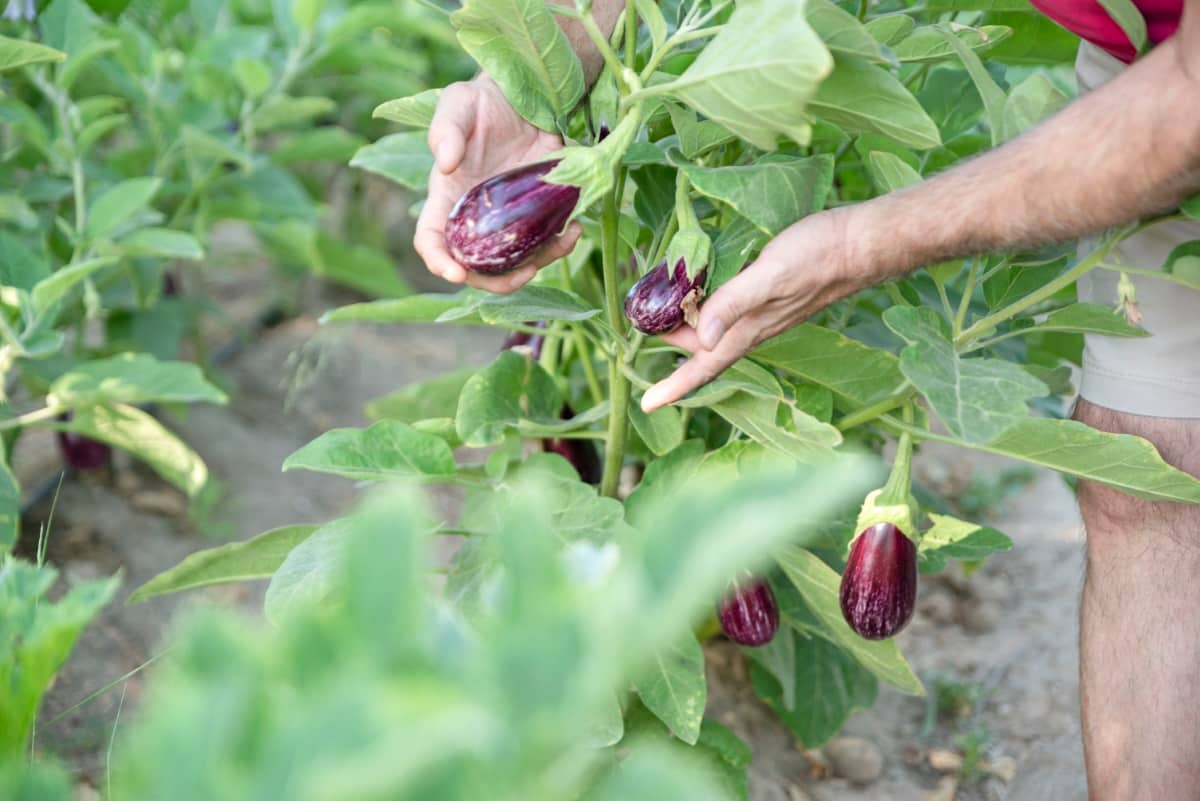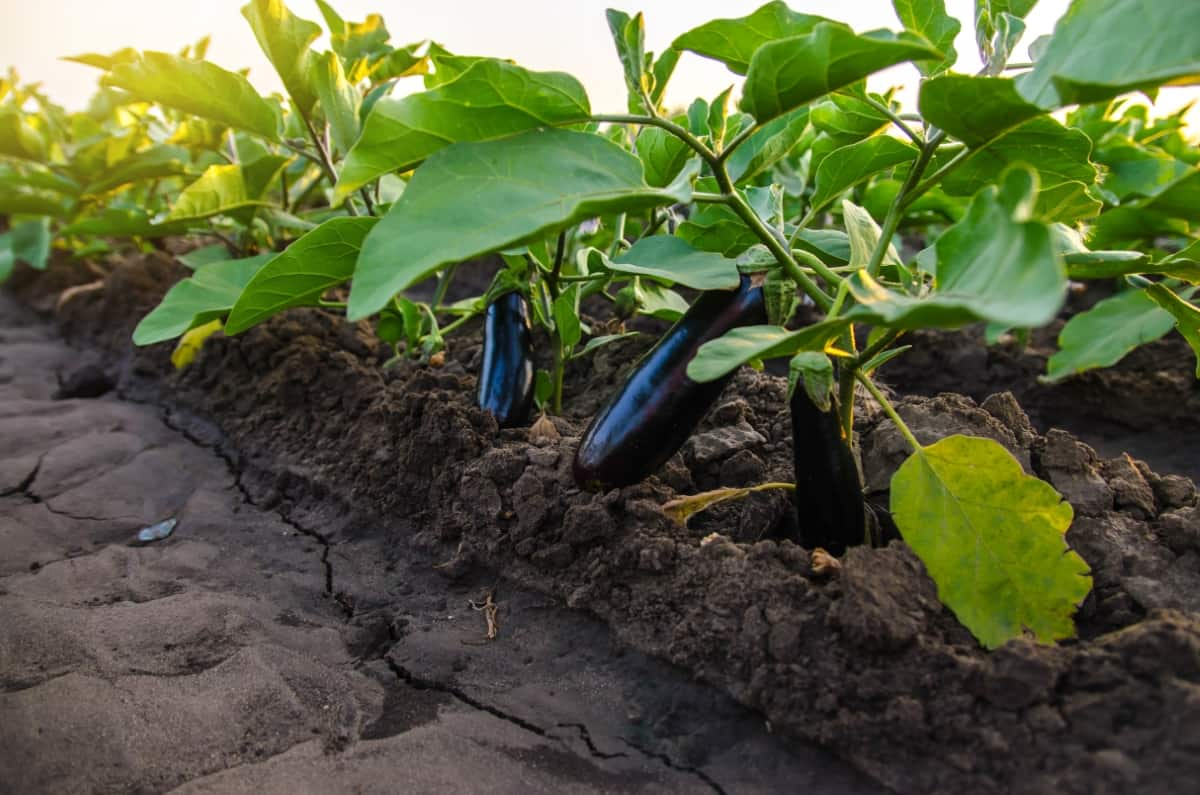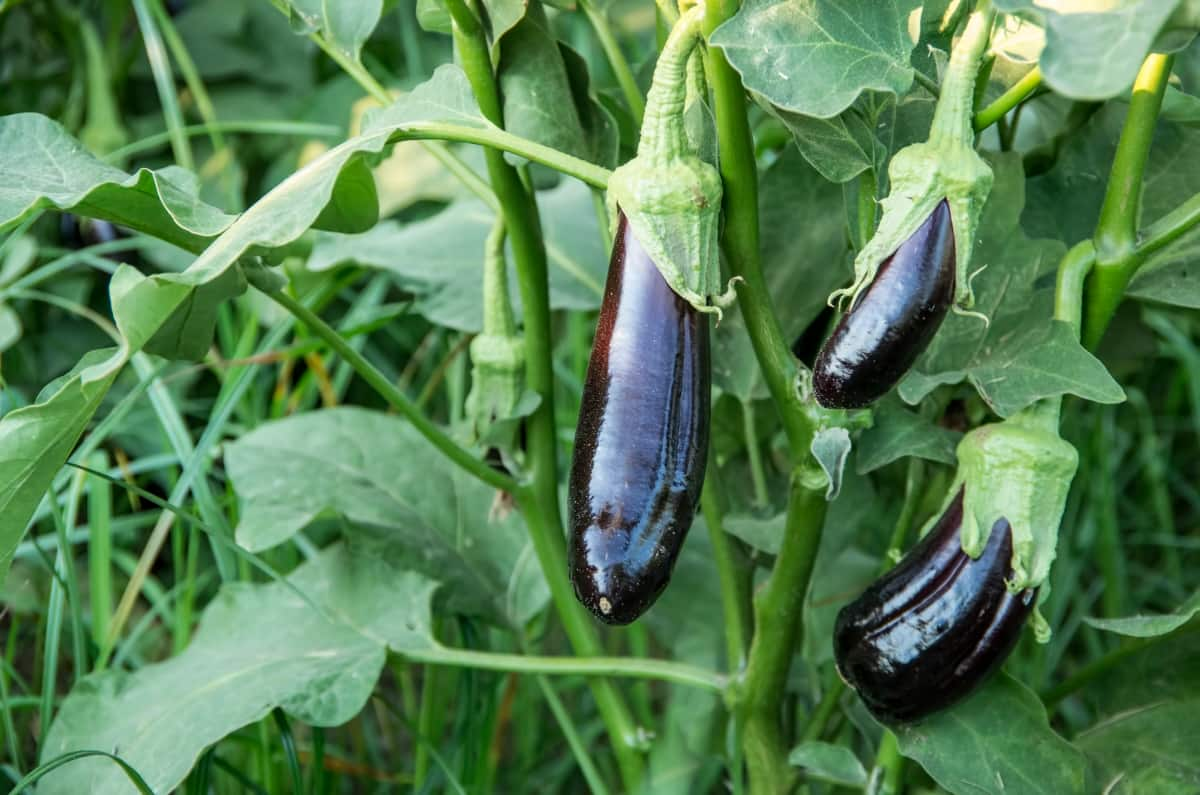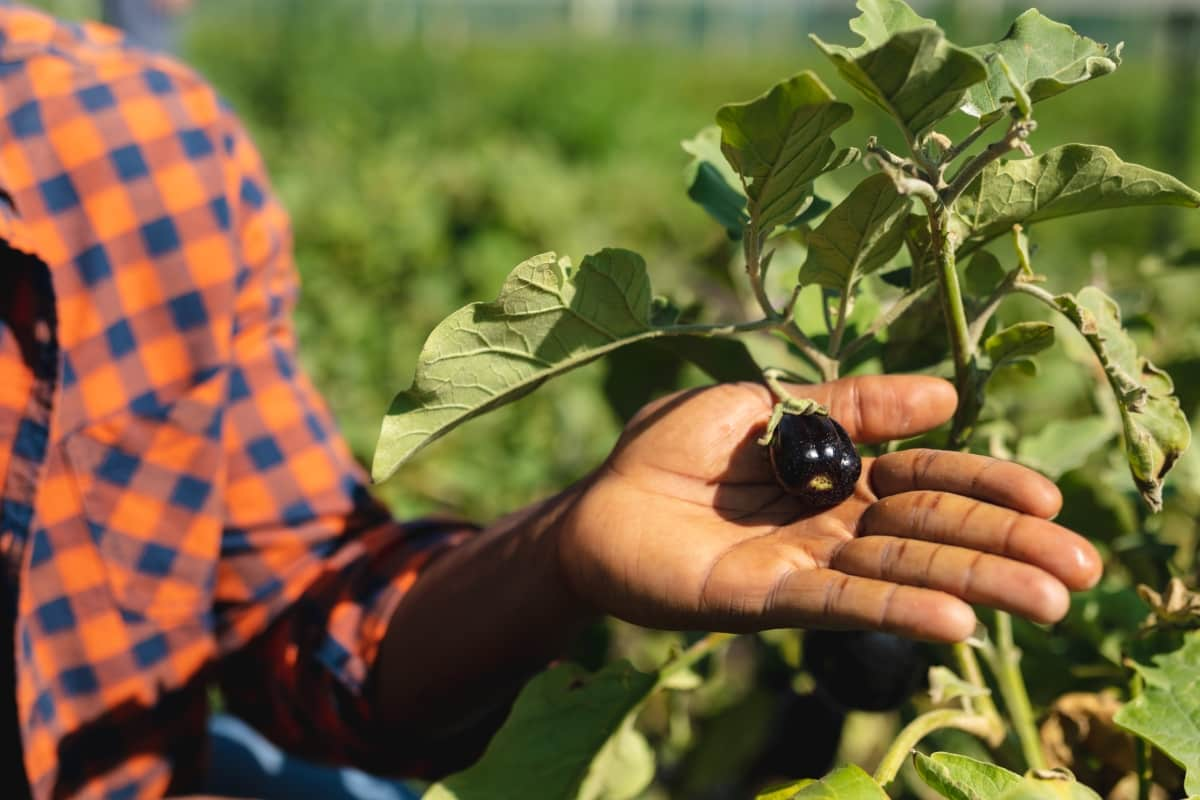Brinjal, a beloved vegetable in many cuisines, often faces challenges from various pests. Effective pest management is crucial for optimal yield and quality. This article explores diverse strategies for controlling and treating common pests like aphids, spider mites, whiteflies, leafhoppers, thrips, caterpillars, and nematodes in brinjal cultivation. We’ll delve into both conventional and organic approaches, emphasizing sustainable practices for long-term pest control.

Brinjal Pest Management
Overview of Pest Management in Brinjal
Pest management in brinjal involves techniques to control pests that attack the plant during its growth cycle. It includes various methods such as cultural, mechanical, biological, and chemical control strategies. These methods aim to reduce the damage caused by pests and ensure a healthy brinjal crop.
Common Pests Affecting Brinjal
Brinjal is susceptible to several pests, including fruit and shoot borers, aphids, whiteflies, and spider mites. These pests can cause notable damage to the plant by feeding on leaves, stems, and fruits. Effective pest management is crucial to protect the brinjal crop from these harmful insects.
Impact on Crop Production and Quality
Pest infestations can lead to reduced crop yield and quality in brinjal cultivation. Severe pest damage can result in stunted growth, wilting of plants, and poor fruit development. Additionally, infested fruits may be deformed, discolored, or unusable, leading to economic losses for farmers.
Fruit and Shoot Borer
The fruit and shoot borer is a key pest of brinjal worldwide. The larvae of this moth species tunnel into the fruits and shoots of the plant, causing extensive damage. Infested fruits may show entry holes and tunneling marks, leading to rotting and loss of market value.
Identifying Signs of Infestation
Signs of fruit and shoot borer infestation include wilting shoots, holes in fruits, and the presence of larvae inside the fruit. Farmers should regularly inspect their brinjal plants for these signs and take prompt action to control the pest infestation.
Integrated Pest Management Strategies
Integrated pest management (IPM) combines various pest control methods to manage pests while minimizing environmental impact effectively. IPM strategies for brinjal cultivation may include.
- Cultural practices.
- Biological control agents.
- Use of resistant varieties.
- Judicious application of pesticides.
Aphids in Brinjal
Small insects called aphids can harm and saponify brinjal plants when they infest them. Their rapid reproduction causes a broad infestation. Aphids are distinguished by their small size, pear-shaped bodies, and typical colors of green or black. They congregate on the undersides of stems and leaves, where they multiply and eat quickly.
Understanding Aphid Lifecycle and Damage
Aphids undergo complex life cycles, including both sexual and asexual reproduction. They can produce numerous generations in a single season. Aphids damage plants by piercing the tissue and sucking out sap, which can weaken the plant and stunt growth. Additionally, aphids secrete honeydew, which attracts other pests and promotes the growth of sooty mold.
Biological and Chemical Control Methods
Biological control methods involve introducing natural enemies of aphids, such as ladybugs or parasitic wasps, to control populations. Additionally, using insecticidal soaps or oils can help manage aphids. However, chemical pesticides should be used cautiously to avoid harming beneficial insects and pollinators.
In case you missed it: Verticillium Wilt Management in Eggplant (Brinjal): Symptoms, Treatment, Chemical, and Biological Control

Spider Mites on Brinjal
Tiny arachnids called spider mites destroy brinjal plants by suckling the sap from their leaves. They frequently show up on the undersides of leaves as small dots in motion. Spider mites proliferate quickly and flourish in hot, dry environments, resulting in serious infestations.
Symptoms of Spider Mite Damage
- Stippling or yellow spots on leaves.
- Webbing on the undersides of leaves.
- Leaf curling.
Severe infestations can cause leaves to become brown and fall off the plant, leading to stunted growth and reduced yields.
Effective Mitigation Techniques
To mitigate spider mite infestations on brinjal plants, it’s important to inspect plants for signs of damage regularly. Pruning infested leaves and improving air circulation can help reduce spider mite populations. Additionally, spider mites can be managed without killing beneficial insects by using neem oil or insecticidal detergents.
Whitefly Infestation
Whiteflies, a common insect, often infest brinjal plants. These microscopic insects can spread viruses and feed on the plant’s sap. Brindavan plants may have yellowing of the foliage, limited development, and decreased fruit output due to whitefly infestations.
Whitefly Lifecycle and Host Plants
Whiteflies have a short lifecycle, consisting of egg, nymph, pupa, and adult stages. They are attracted to a wide range of host plants, including brinjal. Female whiteflies deposit eggs on the undersides of leaves, where nymphs develop and feed on plant sap.
Management Using Biocontrol Agents
Predatory beetles and parasitic wasps are two examples of biocontrol agents that can be employed to control whitefly numbers in brinjal plants. These natural enemies prey on whitefly eggs, nymphs, and adults, helping to reduce their numbers. Introducing biocontrol agents can be an effective and environmentally friendly way to control whiteflies in brinjal crops.
Leafhoppers and Planthoppers
Leafhoppers and planthoppers are common pests found in brinjal fields. They belong to the group of insects known as Hemiptera. These pests feed on the sap of brinjal plants, causing damage to leaves and hindering plant vigor. They are often found in large numbers, especially during the warmer months, posing a significant threat to brinjal crops.
Identifying Leafhopper Damage
Leafhopper damage in brinjal fields can be identified by the characteristic yellowing or browning of leaves, known as stippling. This occurs due to the feeding action of leafhoppers, which puncture the plant tissue and extract sap. Additionally, the presence of nymphs and adults on the underside of leaves is indicative of leafhopper infestation in brinjal fields.
Control Measures and Prevention
To control leafhoppers and planthoppers in brinjal fields, integrated pest management strategies are recommended. This includes cultural practices such as maintaining proper plant spacing and removing weed hosts. Additionally, the use of insecticides, either synthetic or botanical, can be effective in reducing pest populations. Effective pest management in brinjal farms requires frequent monitoring and early discovery.
Thrips in Brinjal Cultivation
Thrips are another common pest in brinjal cultivation. They are small, slender insects that feed by sucking sap from brinjal plants. Thrips damage is characterized by the silvering or bronzing of leaves, distorted growth, and black fecal deposits. These pests can transmit viral diseases, further compromising brinjal yields.
Thrips Species and Their Impact
Several species of thrips can affect brinjal fields, including Western flower thrips and onion thrips. They feed on plant tissue, causing direct damage and transmitting plant viruses. Thrips infestations can lead to significant yield losses in brinjal cultivation, making early detection and control measures essential for crop protection.
Cultural and Chemical Control Options
Cultural control options for managing thrips in brinjal fields include removing weeds and crop residues, promoting natural enemies, and practicing crop rotation. Chemical control methods involve the application of insecticides, such as neonicotinoids or pyrethroids, targeting thrips at different stages of their life cycle. Integrated approaches combining cultural and chemical controls are often the most effective.
In case you missed it: Bacterial Wilt Management in Eggplant (Brinjal): Symptoms, Treatment, Chemical, Biological, Natural, and Organic Control

Cutworms and Caterpillars
Cutworms and caterpillars are common pests that feed on brinjal plants in their larval stages. Cutworms are nocturnal and feed on stems near the soil surface, while caterpillars consume leaves and fruit. Damage from these pests can result in wilting, defoliation, and fruit loss, impacting brinjal yields.
Night-Time Pests in Brinjal Fields
Night-time pests such as cutworms and armyworms pose a threat to brinjal fields. These pests feed primarily during the night, making detection challenging. Damage from night-time pests includes cutting seedlings and feeding on foliage. Vigilant monitoring and implementing control measures during twilight hours are crucial for managing these pests effectively.
Management Practices for Control
Effective management practices for controlling pests in brinjal fields include cultural, biological, and chemical methods. This includes maintaining good sanitation, promoting natural enemies, and using pesticides judiciously. Implementing integrated pest management strategies tailored to specific pest pressures and environmental conditions is key to sustainable pest control in brinjal cultivation.
Nematode Management in Brinjal
Nematodes, tiny worm-like organisms, can cause significant damage to brinjal plants, affecting yield and quality. Effective nematode management is crucial for brinjal cultivation. Farmers employ various techniques to control nematode populations and minimize their impact on crops. Integrated nematode management combines multiple strategies to achieve better results, including cultural practices, biological control, and the use of resistant varieties.
Types of Nematodes Affecting Brinjal
Different types of nematodes can affect brinjal plants, including root-knot nematodes, cyst nematodes, and lesion nematodes. These pests invade the roots of brinjal plants, causing damage and hindering the plant’s ability to absorb water and nutrients. Identifying the specific nematode species present in the soil is essential for implementing targeted management strategies.
Integrated Nematode Management Techniques
Integrated nematode management techniques encompass a range of approaches aimed at reducing nematode populations and mitigating their impact on brinjal crops. These techniques may include crop rotation, soil solarization, the use of organic amendments, and the application of biocontrol agents such as nematophagous fungi and bacteria. Implementing a combination of these techniques can increase nematode control and improve brinjal yield.
Eco-Friendly Pest Management Approaches
Eco-friendly pest management approaches offer sustainable solutions for controlling nematode populations in brinjal cultivation. These methods prioritize environmental conservation and minimize adverse effects on non-target organisms. Examples of eco-friendly pest management techniques include the use of botanical extracts, biopesticides, and habitat manipulation to promote natural enemies of nematodes. By adopting these practices, farmers can maintain balanced ecosystems while effectively managing nematode pests in brinjal fields.
In case you missed it: Hornworms Management in Eggplant: Symptoms, Treatment, Cultural, Chemical, and Biological Control

Conclusion
Effective management of pests in brinjal cultivation is crucial for maximizing yields and quality. Employing various strategies such as biological control, organic methods, and integrated pest management can help control pests like aphids, spider mites, whiteflies, leafhoppers, thrips, caterpillars, and nematodes sustainably.
- Beneficial Insects in Pest Management
- Natural Solutions for Pest Control in Flower Gardens
- Types of Fungicides Used in Agriculture
- Common Issues in the Fruit Development Stage of Pomegranate Farming
- Fruit Development Issues in Papaya: Easy Solutions and Treatment
- Soil-Borne Diseases and How to Protect Your Plants
- Practices to Prevent Disease Spread in the Garden
- From Wilted to Thriving: How to Treat Root Rot Naturally in Houseplants
- Natural Remedies to Cure Brown Spots on Fig Tree Leaves